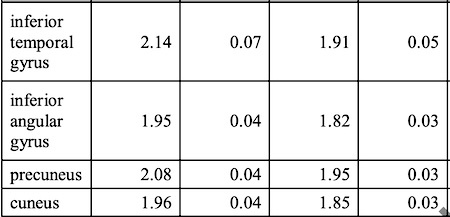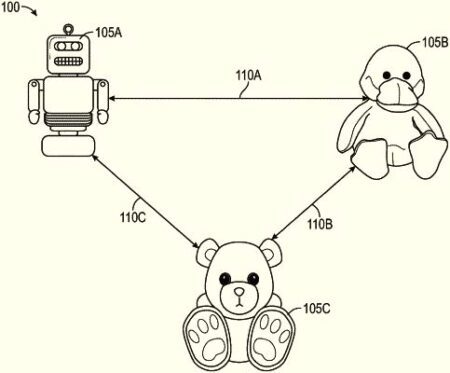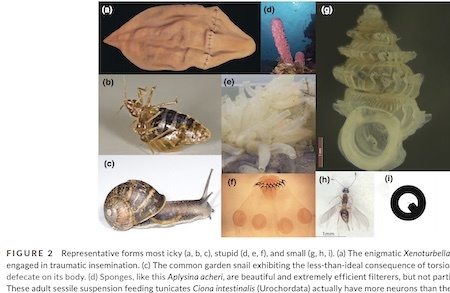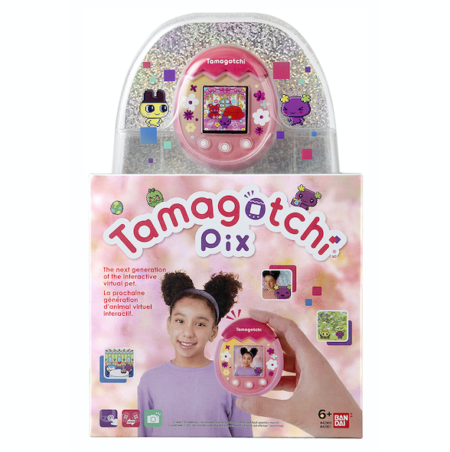Marc Abrahams's Blog, page 81
May 4, 2021
Recent Ups and Downs of Coffee Enemas
Two recent medical studies add milk and sugar, so to speak to what we know, medically, about coffee enemas.
Up with Coffee Enemas (2020) “Coffee Enemas: A Narrative Review,” Linda L Isaacs [pictured here], Alternative Therapies in Health and Medicine, vol. 21, no. 12, December 2020. The author, an M.D. in Austin, Texas, explains:
“Coffee Enemas: A Narrative Review,” Linda L Isaacs [pictured here], Alternative Therapies in Health and Medicine, vol. 21, no. 12, December 2020. The author, an M.D. in Austin, Texas, explains:
Coffee enemas have been in use for at least 150 years, despite the efforts over the last several decades by some in the orthodox medical community to stamp them out as “quackery.” The author and her patients, and other practitioners, find them very useful for the alleviation of a variety of symptoms. In this review, the history of their use, possible mechanisms of action, and risks are discussed, as well as the validity of the attacks against them.
In this video, Dr. Isaacs present her view of coffee enemas:
Down with Coffee Enemas (2020)“The Safety and Effectiveness of Self-Administered Coffee Enema: A Systematic Review of Case Reports,” Heejung Son, Hyun Jin Song, Hyun-Ju Seo, Heeyoung Lee, Sun Mi Choi, and Sanghun Lee, Medicine, vol. 99, no. 36, 2020. The authors, at Seoul National University, Chungnam National University, and several other institutions in South Korea, and the University of Florida, report:
Previous Research on Coffee Enemas
Relevant studies were retrieved from [the major medical literature databases]….
Nine case reports that describe adverse events were identified and included in the analysis. Of these, 7 recent ones reported colitis after self-administration, mentioning that the most plausible cause assumed was the coffee fluid itself, which contained numerous chemical substances. Two others reported more critical adverse events. All 9 case reports with acceptable quality of evidence warned against the self-administration of the procedure. No study that reports the effectiveness of coffee enema was found.
Conclusions: Based on the evidences reviewed, this systematic review does not recommend coffee enema self-administration as a complementary and alternative medicine modality that can be adopted as a mean of self-care, given the unsolved issues on its safety and insufficient evidence with regard to the effectiveness.
We have reported, in the magazine and here on the web site, on some earlier research studies about coffee enemas. among the more popular of these are:
“ Deaths Related to Coffee Enemas ,” J.W. Eisele and D.T. Reay, Journal of the Amercian Medical Association, vol. 244, 1982, pp. 1605-9.“ Rectal Burn Induced by Hot Coffee Enema ,” L.E. Jones and W.E. Norris, Endoscopy, vol. 42 Suppl 2, 2010, p. E26 UCTN.The Royal TreatmentAmateur research, some of it, speaks of coffee enemas as a refreshing approach to good health. Prince Charles of the UK has been reported to regularly boost and use coffee enemas as a health measure.
In this action video, a possibly amateur scientist nominative-determinedly named named Anna Blackpool demonstrates the kind of therapy that Prince Charles supported on a gut level:

May 3, 2021
Podcast Episode #1066: “Arachnophobia in Bug Scientists”
The Ig Nobel Prizes honor achievements that make people LAUGH, then THINK.
In the Ig Informal Lectures, some days after the ceremony, the new Ig Nobel Prize winners attempt to explain what they did, and why they did it.
In Podcast Episode #1066, Marc Abrahams presents the 2020 Ig Nobel Prize winner for Entomology, Richard Vetter. Vetter received the prize for collecting evidence that many entomologists (scientists who study insects) are afraid of spiders, which are not insects.
The study:
“Arachnophobic Entomologists: When Two More Legs Makes a Big Difference,” Richard S. Vetter, American Entomologist, vol. 59, no. 3, 2013, pp. 168-175.
Seth Gliksman, Production Assistant
Available on Spotify, Apple Podcasts, Overcast, Google Podcasts, AntennaPod, BeyondPod and elsewhere!

Musical instruments – masculine or feminine? [study]
If you’re wondering whether musical instruments can be graded according to whether they’re perceived as masculine or feminine, the answer is yes (such perceptions can be graded).
For an example study, look no further than the Journal of Research in Music Education, Volume: 29 issue: 1, page(s): 57-62, Issue published: April 1, 1981, where you’ll find : Sex-role Associations of Music Instruments and Occupations by Gender and Major by Philip A. Griswold and Denise A. Chroback.
The research team found that the musical instruments’ gender association continuum tended to play out like this [ most ladylike first ] : Harp, flute, piccolo, glockenspiel, cello, violin, clarinet, piano, french horn, oboe, guitar, cymbal, saxophone, bass drum, trumpet, string bass, tuba.
A full copy of the paper may be found here
Research research by Martin Gardiner

May 2, 2021
Sure
“Some problems are so complex that you have to be highly intelligent and well-informed to be undecided about them.”

Empirical Girl
Elizabeth Bonawitz is, by her own admission and at her own insistence, an empirical girl:
Somewhat, but only somewhat, by analogy: Not everyone is an empirical girl:

April 30, 2021
Endless Forms Most Stupid, Icky, and Small
Biology is not all cut, not all dry, not all Disneyfied, not always at all easy to classify tidily. This paper tries to kick any intellectually recalcitrant reader into realizing that:
“Endless Forms Most Stupid, Icky, and Small: The Preponderance of Noncharismatic Invertebrates as Integral to a Biologically Sound View of Life,” Jesse E. Czekanski‐Moir and Rebecca J. Rundell, Ecology and Evolution, vol. 10, no. 23, 2020, pp. 12638-12649.
The authors, at the State University of New York College of Environmental Science and Forestry, explain:
“We show that simple, small, and intriguingly repulsive invertebrate animals provide a counterpoint to misconceptions about evolution.”
(Thanks to Sally Shelton for bringing this to our attention.)

April 29, 2021
Ig Nobel Prize-winning Tamagotchi returns in yet another new form
“Not for nothing in 1997, the creators of the Tamagotchi were winners of the Ig Nobel Prize in Economics: Akihiro Yokoi, of the Wiz Company, of Chiba (Japan), and Aki Maita, of the Bandai Company (Tokyo), father and mother of the Tamagochi, “for turning millions of work hours into lost time taking care of virtual pets.”
So says Forbes Mexico, in a report with the headline and subheadline:
Retro mode: favorite virtual pet returns as gadget for the pandemic
The brand new version of the Tamagotchi virtual pet is in pre-sale and in addition to a camera it brings a variety of functionalities to interact.

April 28, 2021
The Precuneus and Anterior Cingulate Gyrus of Professional Comedians
This study attempted to see if there is something funny in the brains of professional comedians. The study is: “Mapping the ‘Funny Bone’: Neuroanatomical Correlates of Humor Creativity in Professional Comedians, Jacob Brawer and Ori Amir, Social Cognitive and Affective Neuroscience, epub 2021. (Thanks to Emine Kidjo for bringing this to our attention.)
Here are some words and numbers from the study:

The authors, based at Pomona College, Claremont, California, and one of whom is a semi-professional comedian, explain:
Measures of cortical surface area (gyrification and sulcal depth) and thickness were extracted for each participant. Compared to controls, professional comedians had greater cortical surface area in the left inferior temporal gyrus, angular gyrus, precuneus, and right medial prefrontal cortex….
The functional connectivity between the ECN and DMN is particularly apparent in the mPFC, precuneus, and the anterior cingulate gyrus, all of which display a positive correlation between comedic skill and measures of surface area.

April 26, 2021
Eduardo Rodriguez joins the Luxuriant Flowing Hair Club for Scientists (LFHCfS)
Eduardo Rodriguez has joined the The Luxuriant Flowing Hair Club for Scientists (LFHCfS). He says:
(LFHCfS). He says:
I am interested in genetics and am currently working on beef cattle genetics. The main focus of my research is the genetic regulation of the nutritional content of beef from Bos Indicus influenced cattle with the goal of developing genomic tools to aid in the selection of healthier beef.
Eduardo Rodriguez, LFHCfS
Graduate student
Department of Animal Science
University of Florida
Gainesville, Florida, USA


Disney’s new chatty toys patent
 As Disney’s newly awarded US patent 10,981,073 (April 20th, 2021) points out :
As Disney’s newly awarded US patent 10,981,073 (April 20th, 2021) points out :
“Toys and characters often have prerecorded phrases or audio effects that can be played to increase the immersion for users who interact with the character. For example, some toys have pull strings, push buttons, and the like that triggers one or more prerecorded sound effects.”
The new aspect of the invention is that the toys no longer just ‘talk’ to their human companions – they can now chat amongst themselves too. And tell each other jokes.
See : Localized and standalone semi-randomized character conversations
Note: The patent document has some nice examples of somewhat-longer-than-normal sentences – which, for reasons not yet entirely clear, are much beloved of patent document compilers. For example :
“A method comprising: determining to output audio based on receiving, by a first device, a first input signal; responsive to determining to output audio, selecting, by the first device, a first communication pattern from a plurality of communication patterns, wherein each respective communication pattern of the plurality of communication patterns specifies a respective plurality of audio profiles, and wherein the first communication pattern, when selected, has no association with any particular audio file and is selected without reference to any particular audio file and with at least a degree of randomness; identifying, by the first device, a first audio profile specified in the first communication pattern, wherein the first audio profile specifies a first length of time and is not associated with any particular audio file; subsequent to selecting the first communication pattern, selecting, by the first device, a first audio file from a plurality of audio files, wherein the first audio file, when selected, has no association with the first communication pattern and is selected without reference to the first communication pattern and with at least a degree of randomness; extracting, by the first device, with at least a degree of randomness, from the first audio file, a first portion of audio corresponding to the specified first length of time; modifying, by the first device, the first portion of audio based on the first audio profile; outputting, by the first device, the first modified portion of audio; determining to output additional audio based on receiving, by the first device, a second input signal; and outputting, by the first device, a second modified portion of audio generated based at least in part on a second audio profile in the first communication pattern.”
Research research by Martin Gardiner

Marc Abrahams's Blog
- Marc Abrahams's profile
- 14 followers







